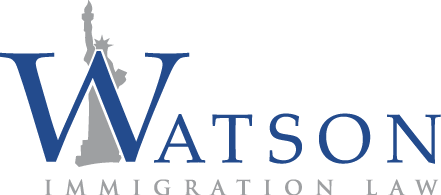Today, the DHS and DOL announced the much anticipated and dreaded rules, which affect H-1B visas and Prevailing Wage requirements for H-1Bs/PERMs, respectively. Both rules will be published as Interim Final Rules, meaning the agencies can forego the usual notice and comment requirements, with the DHS rule set to take effect 60 days from tomorrow and the DOL rule set to take effect immediately upon publishing tomorrow.
More comments and analysis to follow once we have had a chance to review the regulations.
Copied from DHS:
WASHINGTON, DC – The U.S. Department of Labor today issued an Interim Final Rule (IFR) that will help protect the wages and job opportunities of American workers by reforming the prevailing wage methodology used by the Department in several foreign worker programs.
After an extensive review of the Permanent Employment Certification, H-1B, H-1B1, and E-3 Visa programs, the Department has determined that the existing wage methodology leads to potential abuses of these programs that in some cases undermine the wages and job opportunities of U.S. workers. These harms are exacerbated by the recent effects of the coronavirus public health emergency on the U.S. labor market, and require immediate corrective action.
“The U.S. Department of Labor is strengthening wage protections, addressing abuses in these visa programs, and ensuring American workers are not undercut by cheaper foreign labor,” said U.S. Secretary of Labor Eugene Scalia. “These changes will strengthen our foreign worker programs and secure American workers’ opportunities for stable, good-paying jobs.”
The IFR will improve the accuracy of prevailing wages paid to foreign workers by bringing them in line with the wages paid to similarly employed U.S. workers. This will ensure the Department more effectively protects the job opportunities and wages of American workers by removing the economic incentive to hire foreign workers on a permanent or temporary basis in the U.S over American workers.
When seeking to employ an H-1B, H-1B1, or E-3 visa, U.S. employers must attest that they will pay nonimmigrant workers, during the period of authorized employment, the higher of the prevailing wage or the actual wage paid to other employees with similar experience and qualifications.
Similarly, when an employer seeks to hire an immigrant under an EB-2 or EB-3 classification, the employer must seek to recruit U.S. workers for the position using a prevailing wage issued by the Department, and, if no willing, available, and qualified workers are found, promise to pay the foreign worker used to fill the position the prevailing wage.
The prevailing wage rates in these programs thus play an integral role in protecting U.S. workers from unfair competition posed by the entry of lower cost foreign labor into the U.S. labor market. It is essential that the methodology used by the Department in calculating the prevailing wage rates accurately reflect what U.S. workers performing the same kinds of jobs and with similar qualifications make to ensure employers cannot use foreign workers in place of U.S. workers.
The mission of the Employment and Training Administration is to contribute to the more efficient functioning of the U.S. labor market by providing high-quality job training, employment, labor market information, and income maintenance services primarily through state and local workforce development systems.
The mission of the Department of Labor is to foster, promote, and develop the welfare of the wage earners, job seekers and retirees of the United States; improve working conditions; advance opportunities for profitable employment; and assure work-related benefits and rights.
**Copyright 2020 by Watson Immigration Law. All rights reserved. This material may not be published, broadcast, rewritten or redistributed.
